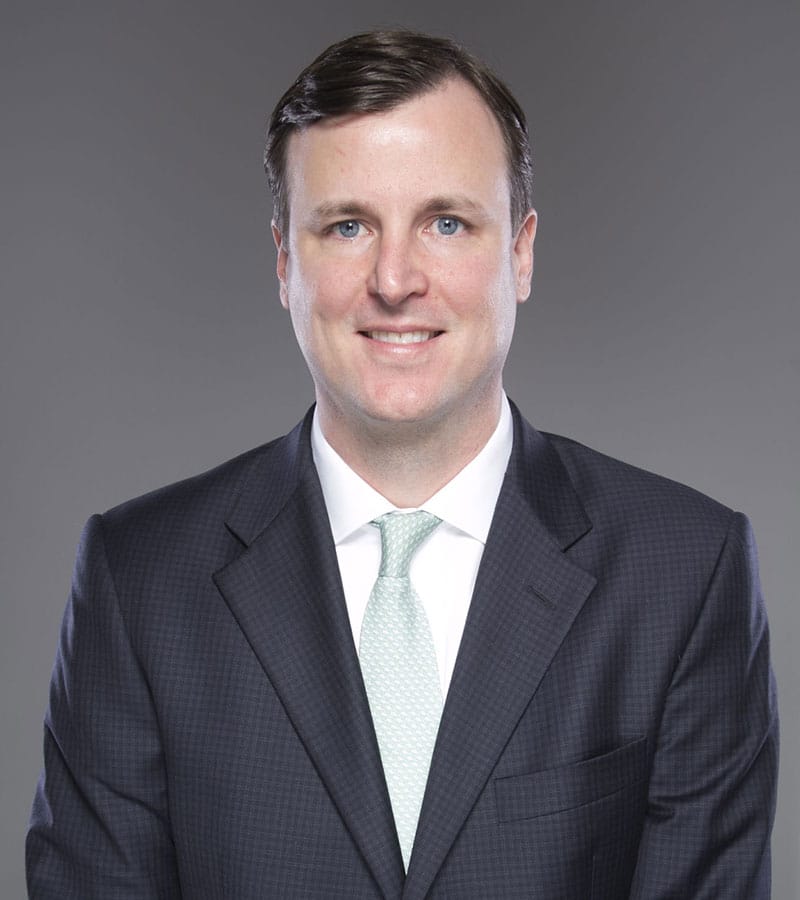We’re from the Government, and We’re Here to Help—The False Promises and Real Harms of Tort Reform and HB 19
May 26, 2021

From wasteful government projects to dictators permanently seizing emergency powers after being democratically elected, bad policies usually aren’t marketed as being bad. No. They come wrapped in shiny packaging, glittering with the promise of making everyone’s lives better, especially normal people. Tort reform is no different. It’s sold as cutting down on “frivolous” lawsuits, reducing unnecessary litigation costs for businesses and society alike, ignoring the harms it creates.
The architects of these anti-consumer laws (usually insurance companies and their lobbyists) sell them to the masses by focusing on absurd edge cases and claiming people will be safer and the economy would be stronger if they are able to pass laws constraining the ability of injured people to be fully compensated for their losses. That’s how the first round of major tort reform capping the amount injured Texans could receive after being injured due to medical malpractice passed and that’s how the sponsors of Texas House Bill 19 (HB 19) (and its counterpart, SB 17) hope to pass laws limiting the liability of negligent trucking companies.
Before we discuss HB 19, a little history lesson about tort reform is in order.
What Is Tort Reform?
Broadly speaking, tort reform is the effort by insurance companies and businesses to implement caps on the amounts that individuals who are injured can recover in a lawsuit after a jury has returned a verdict holding the tortfeasor liable for its wrongdoing. To gain support for laws protecting these companies while limiting the ability of private citizens to be fairly compensated for injuries they suffered due to no fault of their own, sponsors of these bills focus on “frivolous” lawsuits or twist the facts of notable cases to frame the issue in a way that makes the seriously injured people the villains and the big businesses the victims.
The McDonald’s Hot Coffee Case (or, Dishonest Messaging about Big Jury Awards and Framing the Discourse in Favor of Tort Reform)
Although it happened almost 30 years ago, chances are you’ve heard about the Liebeck v. McDonald’s lawsuit. The plaintiff, 79-year-old Stella Liebeck was injured when she was trying to add cream and sugar to the coffee she ordered at a McDonald’s drive-thru in Albuquerque, NM and it spilled on her lap. The case resulted in Mrs. Liebeck being awarded $3 million by a jury, helped give rise to the “Caution: Contents Hot” labels now ubiquitous on disposable drink containers in the US, and became one of the rallying points for tort reform proponents.
At first glance (and with a big assist from how the media reported the case), the case does seem a bit ridiculous. Who doesn’t know hot coffee is, in fact, hot? Why should McDonald’s be forced to pay $3 million because a woman spilled coffee on herself just because it didn’t warn her that hot coffee would be hot?
But when you dig a bit deeper into the actual facts, McDonald’s behavior looks more egregious and the verdict looks a lot more reasonable.
Let’s start with the injuries Mrs. Liebeck suffered.
The coffee was so hot that it caused Mrs. Liebeck to suffer third-degree burns on her thighs and groin—burns so bad that she required skin grafts and suffered permanent scarring. The average serving temperature of coffee at McDonald’s at the time was 180 degrees Fahrenheit—the highest of any fast food restaurant—and well above both (1) the ideal 120-to-140 degree temperature for drinking coffee and (2) the temperature at which water can burn someone within seconds. On top of that, the McDonald’s quality assurance manager who testified at trial said the temperature “was not fit for consumption because it would burn the mouth and throat.”
Now let’s look at how McDonald’s behaved.
Why did McDonald’s keep its coffee so hot? McDonald’s claimed the high temperature made the coffee taste better (which seems a bit ridiculous if it’s too hot to be consumed by humans by their own admission) and kept the coffee warm longer for people who were commuting. Those benefits apparently justified the severe burn risk caused by the McDonald’s operations manual’s requirement that franchisees kept coffee heated between 180 and 190 degrees Fahrenheit.
But the bigger question is why did McDonald’s keep the coffee so hot—hot enough to cause third-degree burns in three to seven seconds—despite having known about the severe burn risk for more than 10 years and having received more than 700 previous reports of injuries from its coffee?
Then, Mrs. Liebeck requested $20,000 from McDonald’s to settle the case. That was just to recover the cost of her hospital stay that wasn’t covered by Medicare. McDonald’s countered with an offer of $800, which Mrs. Liebeck rightly rejected and sent the case on its path to trial.
The jury understandably found Mrs. Liebeck partially responsible for her injuries and her compensation was reduced accordingly. It also, however, based in part on the facts flagged above, dear reader, decided to assess $2.7 million in punitive damages—or, roughly two days’ worth of revenue from coffee sales alone—against McDonald’s to make sure it would change its practices and take the risk of severely burning its customers seriously rather than writing it off as a cost of doing business. Notably, the jury awarded the punitive damages without Mrs. Liebeck asking for them. The punitive damages were reduced by the court to $480,000, which McDonald’s nonetheless appealed before reaching a confidential settlement with Mrs. Liebeck.
Without knowing the above facts, the headline “Woman Awarded $3 Million from McDonald’s After Spilling Coffee on Herself” may sound a bit crazy, even frivolous. But after knowing the facts, it may sound a lot more reasonable.
Tort Reform’s Impact on Medical Malpractice
One of the major targets of tort reform proponents has been introducing damages caps in medical malpractice cases. They cite the benefits of reduced insurance premiums and fewer lawsuits for doctors, improved doctor retention rates, and better healthcare for patients in states that have imposed these caps to justify limiting the amount of money severely injured individuals are legally allowed to recover in lawsuits.
Let’s examine those claimed benefits.
Medical malpractice insurance premiums and the number of medical malpractice lawsuits have indeed decreased in Texas since the 2003 tort reform initiative passed the legislature and was enacted via a voter-approved amendment to the Texas Constitution, so those claims were and are true, at least for Texas. Tort reform proponents themselves have admitted damages caps won’t necessarily decrease premiums. Moreover, part of any decrease in premiums is due to the economic reality that it is no longer financially feasible for attorneys who work on contingency to expend time and resources on injury cases that have artificial caps imposed on what their severely injured clients can recover. The decrease in premiums goes hand in hand with the decrease in lawsuits, because the fewer lawsuits that are filed, there will correspondingly be fewer claims for medical malpractice that will be made and paid. Fewer claims being paid means the insurance companies keep more money and don’t need to increase premiums to stay profitable. Moreover, a study found that tort reform has not reduced health care costs in Texas.
Physician retention rates, on the other hand, don’t seem to improve based on damages caps. As a Wisconsin appellate court recently observed, “the existence or non-existence of a noneconomic damages cap has no demonstrably consistent effect on physician retention anywhere. Data demonstrates that many states with no caps on noneconomic damages actually have higher physician retention rates than Wisconsin [a state that imposed a damages cap].”
That court made similar observations about the claim that imposing damages caps in medical malpractice cases improves healthcare outcomes for patients, holding “data suggests that the existence of noneconomic damages caps may actually increase the risk to patient safety.” In support of that point, the court cited an evidence-based study by Bernard S. Black and Zenon Zabinski, which concluded “We find evidence that reduced risk of med mal litigation, due to state adoption of damage caps, leads to higher rates of preventable adverse patient safety events in hospitals. Our study . . . find[s] strong evidence consistent with classic tort law deterrence theory—in which liability for harm induces greater care and relaxing liability leads to less care. The drop-in care quality occurs gradually over a number of years following adoption of damage caps.”
In other words, without proper incentives to behave carefully, the standards of care drop, people less worried about liability behave less carefully, and innocent people are more likely to be injured.
HB 19 and the Scheme to Shield Negligent Companies from Liability
Following in the grand tradition of tort reform, HB 19’s proponents again claim that the bill is meant to improve things for consumers by reducing the number of “frivolous” lawsuits and reducing costs for insurers.
As the bill’s author, State Rep. Jeff Leach (R-Plano) puts it, “This bill installs a legal and procedural framework that will protect Texas businesses of all sizes from abuses in our justice system, from abuse of lawsuits that are threatening the very existence of many of our small businesses.”
This bill comes at a time when Texas is by far the national leader in fatal crashes involving 18-wheelers, with about 50% more crashes than the next-highest (and more populous) state: California. In 2019, Texas averaged 1.26 deaths on Texas roads per 100 million vehicle miles traveled, about 25% higher than the national average of 1.1 fatalities per 100 million vehicle miles.
In fact, based on data collected by the Texas Department of Public Safety in a 2013 program, a higher percentage of 18-wheelers on the roads in Texas failed to meet federal and state road safety standards. And between 27 and 30% of those trucks shouldn’t be operating at all because of major safety issues including defective brakes, bald tires, unworking safety lights, and under/unqualified drivers.
Despite this, HB 19’s authors want to shield commercial companies from liability for crashes caused by drivers they employ by requiring the driver to be proven liable in court before the company could be sued. This would result in protracted litigation, make it harder for injured Texans to be compensated for their damages, and result in these companies escaping accountability for their negligent safety practices, leading to more dangerous roads and more dead Texans.
President Ronald Reagan once famously said, “The nine most terrifying words in the English language are: ‘I’m from the Government, and I’m here to help.’” It was true then. And it’s true now when lawmakers are trying to “help” Texans by making it harder for injured people to sue negligent companies.
Tell Your State Lawmakers to Oppose HB 19 and SB 17
If you want to help make Texas roads safer and protect the rights of yourself and your fellow Texans to be fully compensated for injuries caused by the negligence of companies and the drivers they employ, please contact Governor Abbott and tell him you oppose HB 19 and its Senate counterpart, SB 17 because you care about safe roads for Texans.
If You’ve Been Injured in an 18-Wheeler Crash, Talk to an Attorney
Although it has passed the Texas House, HB 19 has not been enacted into law yet. Until it’s made law, people injured in a crash involving an 18-wheeler or another commercial vehicle (like an Uber or Lyft) still have the right to sue those companies for their negligence. If you’ve been injured in such a crash involving an 18-wheeler, contact one of the experienced Houston 18-wheeler accident lawyers at Morrow and Sheppard LLP for a free, confidential consultation today.
John Sheppard is an experienced trial and personal injury lawyer who prides himself on working harder than the competition, aggressive legal representation, strategic thinking, and successful results. John particularly enjoys trying complex cases such as refinery and plant explosions, maritime accidents, oilfield accidents, wrongful death, and more. Learn more about John.
- Home
- |
- Workplace Accidents
- |
- We’re from the Government, and...
















































